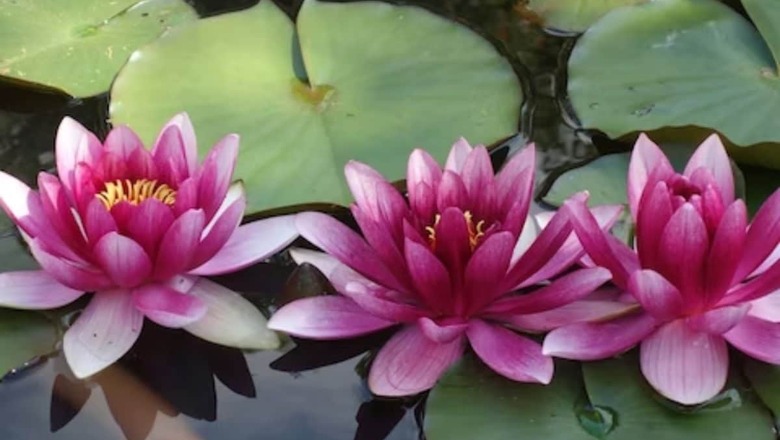
views
On Monday, January 22, Prime Minister Narendra Modi inaugurated the Ram Mandir in Ayodhya, marking a historic moment with the consecration of the idol of Lord Shri Ram. During the puja, PM Modi was observed holding a lotus flower in his hand, signifying the national flower of India, which holds special significance in worship practices. With numerous religious events occurring throughout the year in the country, the demand for lotus remains constant, making lotus cultivation a lucrative venture for those seeking profitable opportunities.
Experts suggest that lotus cultivation can yield eight times the profit compared to the investment cost. Notably, lotus cultivation is no longer restricted to ponds, as it can take place on flat land, requiring minimal investment to generate substantial returns.
For those interested in lotus cultivation, the process is relatively straightforward. If a pond is available, it can be utilised; otherwise, lotus can be grown in a field. The process involves ploughing and crumbling the soil, levelling it with a mortar, and sowing lotus seeds. To facilitate growth, the field should be consistently filled with water for two months, ensuring the necessary moisture and mud for optimal lotus plant development.
Lotus cultivation offers the advantage of two crops per year. Sowing seeds in June results in a harvest ready by October, while a second sowing in December yields flowers ready for plucking by May.
For one acre of lotus cultivation, approximately 5 to 6 thousand plants can be planted. The total expenditure, including water and seeds, amounts to Rs 25 to 30 thousand. Upon maturity, the flowers can be sold in the market, with an estimated revenue of around Rs 2 lakh per acre. This translates to a substantial profit of Rs 2 lakh from an initial investment of Rs 25 thousand. Moreover, farmers can enhance profits by cultivating additional crops like Makhana and water chestnut in the same field alongside lotus.
As lotus cultivation emerges as a financially rewarding endeavour, it presents an opportunity for individuals to capitalise on the cultural and religious significance of the national flower while generating substantial profits.


















Comments
0 comment